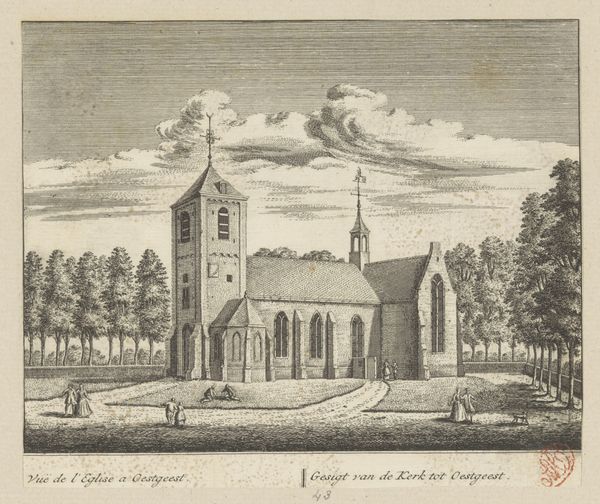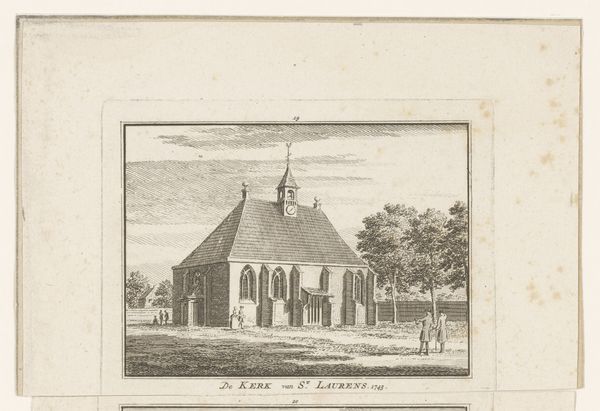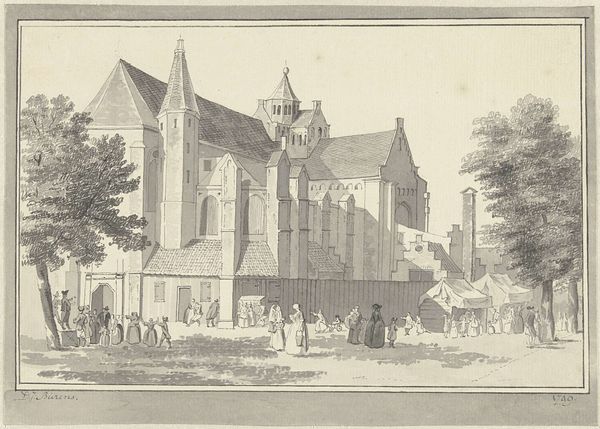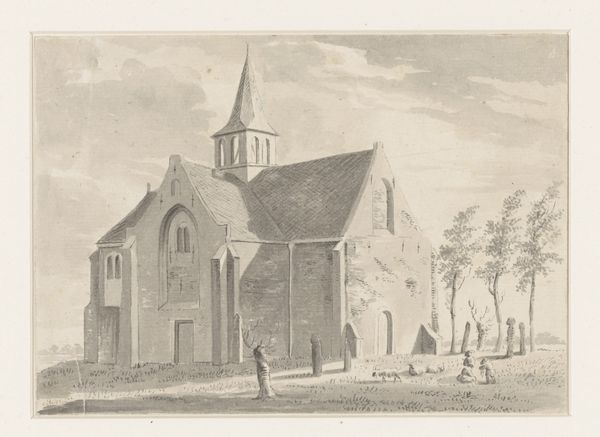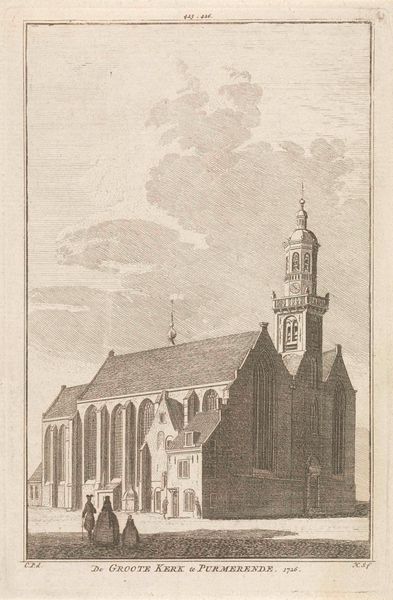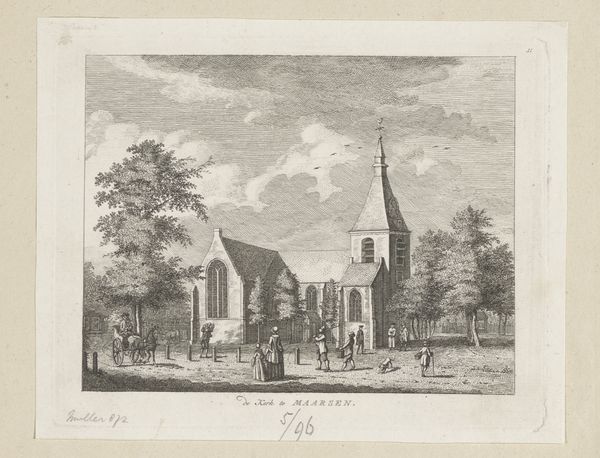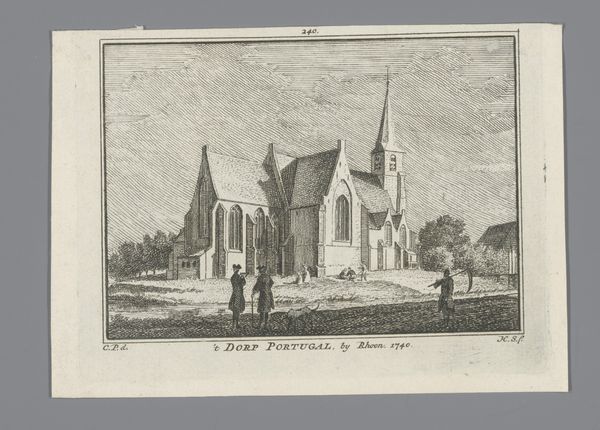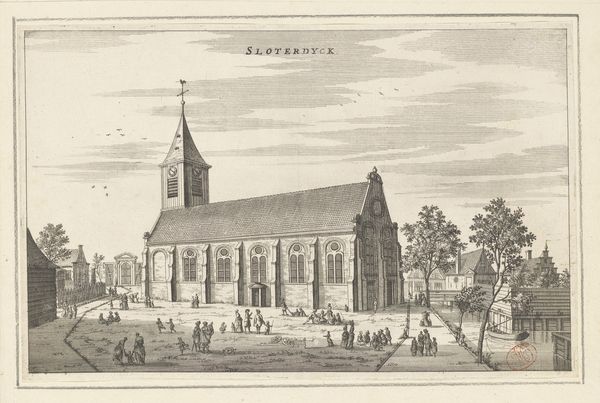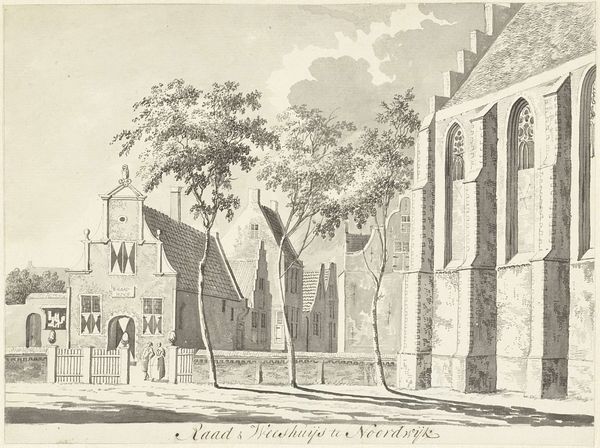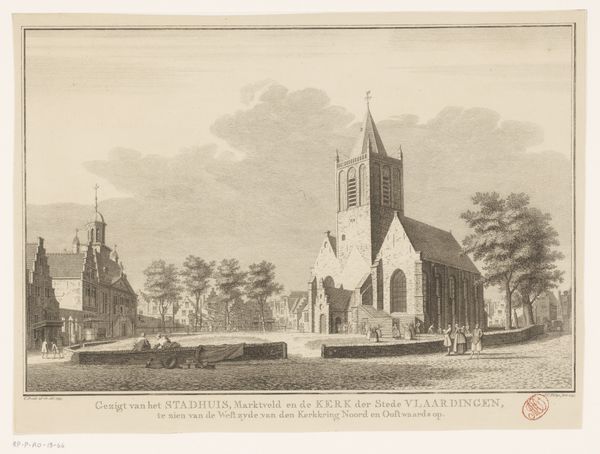
print, engraving, architecture
#
dutch-golden-age
# print
#
landscape
#
cityscape
#
engraving
#
architecture
Dimensions: height 132 mm, width 208 mm
Copyright: Rijks Museum: Open Domain
Curator: François van Bleyswijck created this print, "Gezicht op de Oude Kerk te Alphen aan den Rijn," sometime between 1714 and 1728. It’s currently held in the Rijksmuseum. Editor: It's remarkably serene. The fine lines create such a still atmosphere, almost dreamlike despite the detailed architecture of the church. The soft rendering of the sky and trees contrasts with the sharp precision of the church itself. Curator: Absolutely. Prints like this served a crucial role, documenting urban and rural spaces, creating a sense of place and collective identity. The Dutch Golden Age was a period of tremendous civic pride, and depictions of churches reinforced that. But let’s think about the choice to depict it in print versus a painting, for example. Editor: It speaks volumes about accessibility. Prints, in comparison to unique paintings, had the ability to reach a wider public, disseminating architectural and urban ideals but, simultaneously, underscoring the class divisions within society as it would still be accessed mostly by privileged demographics. Curator: That’s precisely what I'm driving at! We see an object, but must analyze its social life within systems of power. Think about what this building signified in 18th-century Dutch society, a society increasingly driven by mercantile success, in which the church continued to yield considerable power. How did this visual representation interact with other social institutions? Did it challenge or support norms? Editor: Good points. Considering its visual weight, and prominence, within the landscape, its prominence in visual culture seems to be reflective of social power. Were there internal conflicts, religious schisms that shaped the representation of churches at that moment? The choice to foreground the church would inherently play into the existing social narrative. Curator: Precisely. Think, also, about the perspective. It presents a specific viewpoint – not necessarily the most picturesque, but one that conveys solidity and order. What statement is the artist— and perhaps the patron—making? Is there also an attempt to subtly integrate religious belief within everyday life? Editor: I think that is a valid reading, and one I’d suggest visitors continue to ponder. These landscapes were powerful tools, and we can still engage with their subtle, but poignant, messaging.
Comments
No comments
Be the first to comment and join the conversation on the ultimate creative platform.
